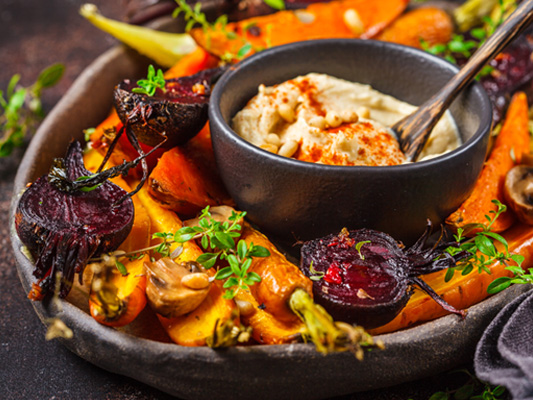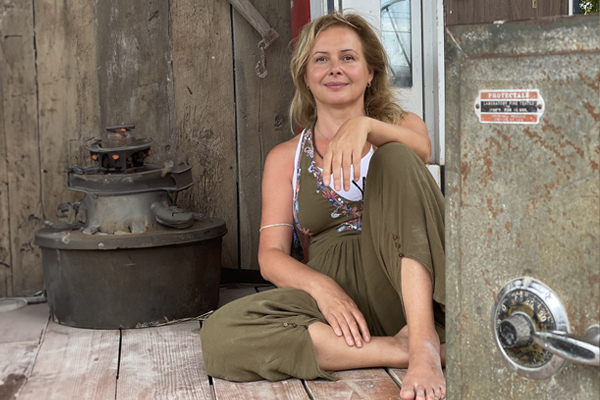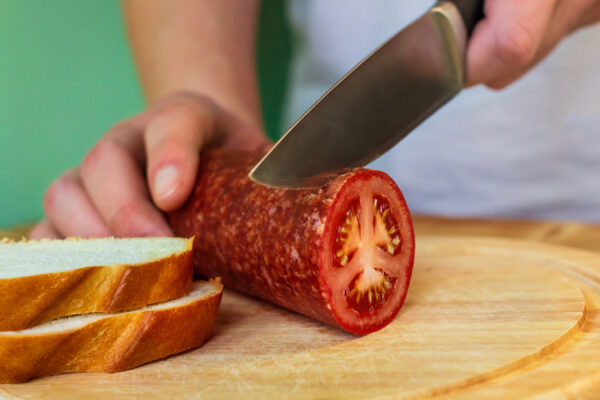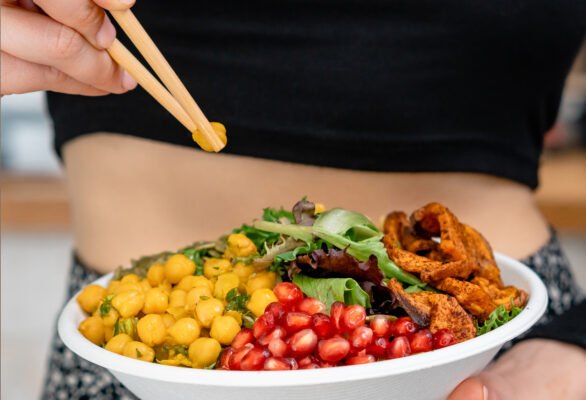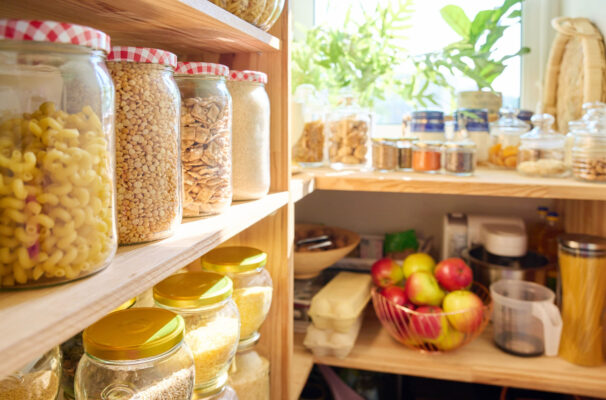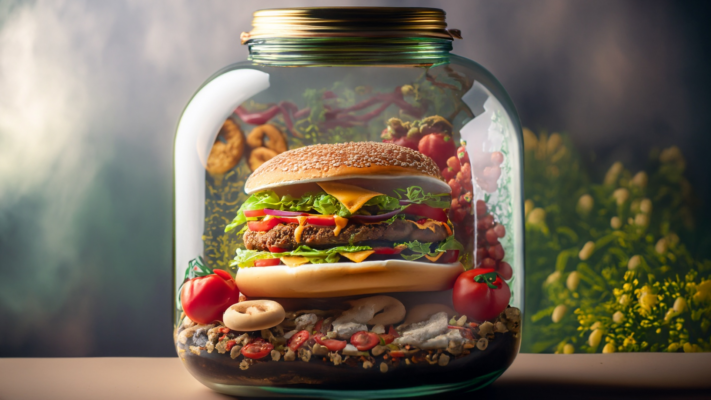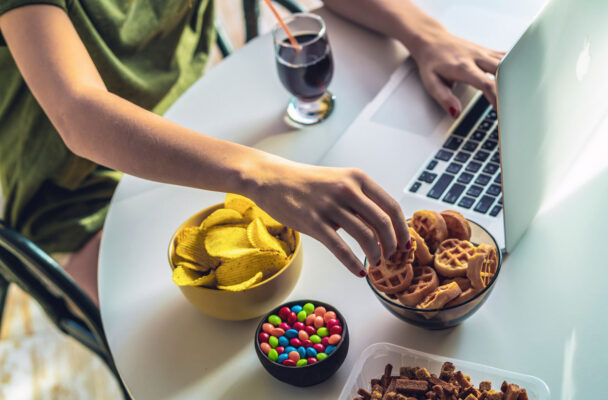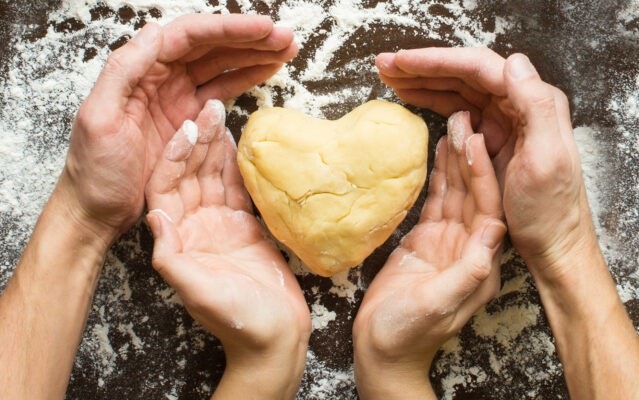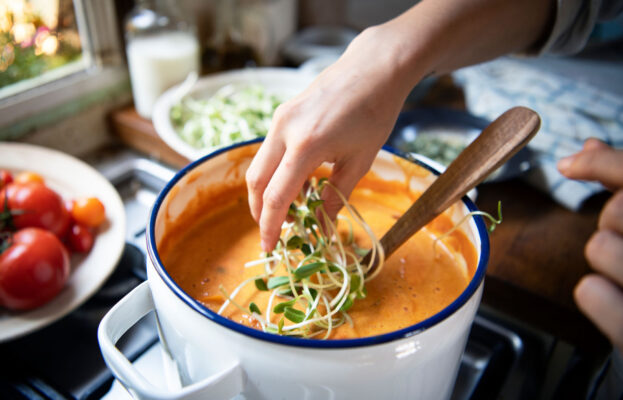Ever caught yourself reaching for that familiar snack, even when you’re not really hungry? You’re not alone. Our eating habits are often less about hunger and more about the psychology of our plate. In our journey from conditioning to food habits, we’ve all developed certain patterns and preferences. But have you ever stopped to wonder why? In this exploration of the psychology behind our food habits, I’ll delve into the influence of conditioning on our choices, examine the role of emotions in our dietary decisions, and provide insight into how understanding these factors can lead to healthier, more conscious eating.

The Bells of Habit: How Conditioning Shapes Our Plate
Mindful eating is all about getting to know our eating habits better – those little habits we’ve picked up over time without even realizing it. You know how people talk about conditioning? Like, how Pavlov trained dogs to drool at the sound of a bell? He’d ring the bell each time he fed the dogs, and after a while, the dogs would start drooling just at the sound of the bell, even if there wasn’t any food around. It was like their bodies had learned to expect food whenever they heard the bell.
We, humans, do the same sort of thing. When something good happens – like getting a compliment, a hug, or eating some super tasty food – we’re more likely to do whatever led to that good thing again. And when something not-so-great happens, like getting scolded or experiencing something unpleasant, we’re less likely to do whatever caused it.
So, think about your favorite food when you were a kid. Let’s say it was ice cream. Why did you love it so much? Probably because it tasted great, and maybe it was also a treat you got when you were good, or to celebrate something special. So, ice cream = happiness, right? But then, one day you ate too much of it, and got sick. Now, even the thought of ice cream might make you feel a bit queasy. That’s your body remembering that not-so-great experience and trying to keep you from repeating it.
Or here’s another one. Think about how you eat your food. Most of us were taught to use a knife and fork, right? That’s because someone told us it was the “proper” way to eat. But if you were raised somewhere else, like in parts of Asia, you might be really skilled at using chopsticks instead. And if you grew up in Ethiopia, you’d be used to eating with your hands, using a flatbread called injera to scoop up your food. It’s all just what we’re used to – there’s no “right” or “wrong” way to eat, really.
And one more for you. Imagine you’re used to eating dinner at 6 p.m. every day because that’s what your family always did. Then you move to a country like Spain where dinner doesn’t usually start until 9 p.m. or even later. At first, you’d probably be starving by the time dinner rolled around, but after a while, your body would adjust to the new schedule. You’d get used to eating later, and it would start to feel normal. That’s another form of conditioning – our bodies can adapt to new routines and habits if we give them enough time.
So, really, a lot of our eating habits are just about what we’re used to, and they can change depending on our experiences and circumstances!

From Joy to Jeopardy: The Duality of Food in Our Lives
Sure, a lot of what we choose to eat comes from what we’ve learned over time – that’s the whole social conditioning thing. But let’s be real, some foods just taste so good we can’t resist them. Think about stuff like sugar, salt, and fatty foods. They not only make our taste buds do a happy dance but also give us a nice little mood boost.
Now, on the flip side, there are things that our bodies just flat-out reject. Let’s say you’ve got a major sweet tooth and you decide to try this new candy that everyone’s talking about. But oh no! You bite into it and discover it has a super spicy center, which you absolutely can’t stand. Your mouth feels like it’s on fire, you’re running for a glass of water… that’s an experience you won’t forget anytime soon. That’s your body and your brain teaming up to tell you, “That candy? Yeah, let’s not do that again.”
Or here’s another example. Ever had food poisoning from some bad sushi or undercooked chicken? It’s the worst, right? You’re sick as a dog for a day or two, and then for a while after that, even the thought of sushi or chicken might make your stomach churn. That’s negative conditioning in action. Your body remembers the pain and the discomfort, and it’s doing its best to keep you from going through that again.
And it’s not just about food, either. Ever touched a hot stove by accident? I bet you only did that once. The instant pain and the resulting burn were enough to teach you to always be careful around the stove. That’s another example of negative conditioning – a painful lesson, but an effective one!
So, when it comes down to it, negative conditioning is all about learning from our less-than-great experiences. It’s our body’s way of keeping us safe and steering us away from stuff that’s not good for us. Pretty cool, right?

Back to the Cradle: How Early Experiences Shape Our Palates
Conditioning – it’s just a part of life, and it starts right when we’re born. Picture this: you’re a baby, snuggled up with your mom, enjoying some warm milk. Did you know breast milk is actually kinda sweet? So, it’s no big shocker that when we grow up, our go-to comfort foods often remind us of that early experience. Think about it: ice cream, mac ‘n cheese, buttery mashed potatoes, creamy soup, a fancy latte with whipped cream, hot cocoa, or even just a simple warm milk. They’re all milky, creamy, rich, or sweet, just like what we first tasted.
And think about when you were a baby and you cried. Someone would pick you up, give you something to suck on, and you’d calm down. Scientists can even tell how upset a baby is by how fast they’re sucking. For ages, people have dipped rags or pacifiers in sugar to soothe crying babies. Nowadays, we’ve got a billion-dollar industry selling “binkies” or pacifiers, all based on that comforting feeling of sucking.
So, is it really a surprise that adults are walking around with water bottles all day, sipping flavored water? It’s like a grown-up version of a pacifier, a stress-reliever we can use all day. And don’t get me started on the people with their ever-present cups of coffee or tea. It’s the same deal: we’re stressed, we have a warm drink, and we feel a bit better. We’ve made a connection between these things in our minds and bodies. It’s pretty wild when you think about it, isn’t it?
And maybe when you were a kid and you fell and scraped your knee. Your mom or dad probably cleaned it up, put a band-aid on it, and gave you a kiss or a hug to make it feel better. Maybe they even gave you a lollipop or a piece of candy. Now, as an adult, when you’re feeling down or hurt, you might find yourself reaching for something sweet. That’s conditioning at work – your body remembers the comfort and care associated with that sweet treat.
And how about this one: I remember how special it felt to have a soda or a piece of cake at a birthday party when I was little. It was a treat, something out of the ordinary that marked a fun and happy occasion. Now, as an adult, when I’m celebrating something or when I want to make a day feel special, I find myself craving something sugary or fizzy, like apple cider. Again, that’s conditioning – my mind has linked these foods with feelings of celebration and joy.
Or here’s another one. Let’s say that as a kid, you always had a warm bowl of soup when you were sick. The soup itself was nice, but what was even better was the feeling of being cared for and looked after. Now, when you’re feeling unwell or just a bit off, you might find yourself craving soup, even if it’s the middle of summer. That’s your mind and body remembering the comfort and care associated with that particular food.
As you can see, conditioning plays a big role in our eating habits and food choices. And while we might not always be aware of it, it’s something that’s happening all the time, shaping our preferences and behaviors in subtle ways.

From Hero to Zero: The Impact of Feedback on Our Food Choices
So, just like that, this whole conditioning thing keeps on going. And it can be good or not so good.
Let’s say you’re a kid, and every time you finish your veggies, your parents cheer and tell you what a champ you are for eating all your greens. That’s some positive conditioning right there. You’re gonna start associating eating veggies with getting praised and feeling like a winner.
But what if every time you reach for a second helping of dessert, you get a stern look and a comment like, “Really? More cake? You don’t want to end up chubby, do you?” That’s negative conditioning. You might start feeling a bit guilty every time you want a little extra sweet treat, even though there’s nothing wrong with indulging now and then.
And it’s not just comments that can shape our eating habits. Imagine a kid who grew up in a home where every family gathering or holiday was marked with big, hearty meals. As an adult, they might associate food and feasting with warmth, love, and togetherness. On the flip side, someone who had to diet constantly as a kid might grow up feeling anxious around food and struggle with eating in a balanced way.
So you see, whether it’s about what we eat, how much we eat, or even how we feel about eating, these experiences and messages from our past can really shape our relationship with food. Pretty wild, isn’t it?
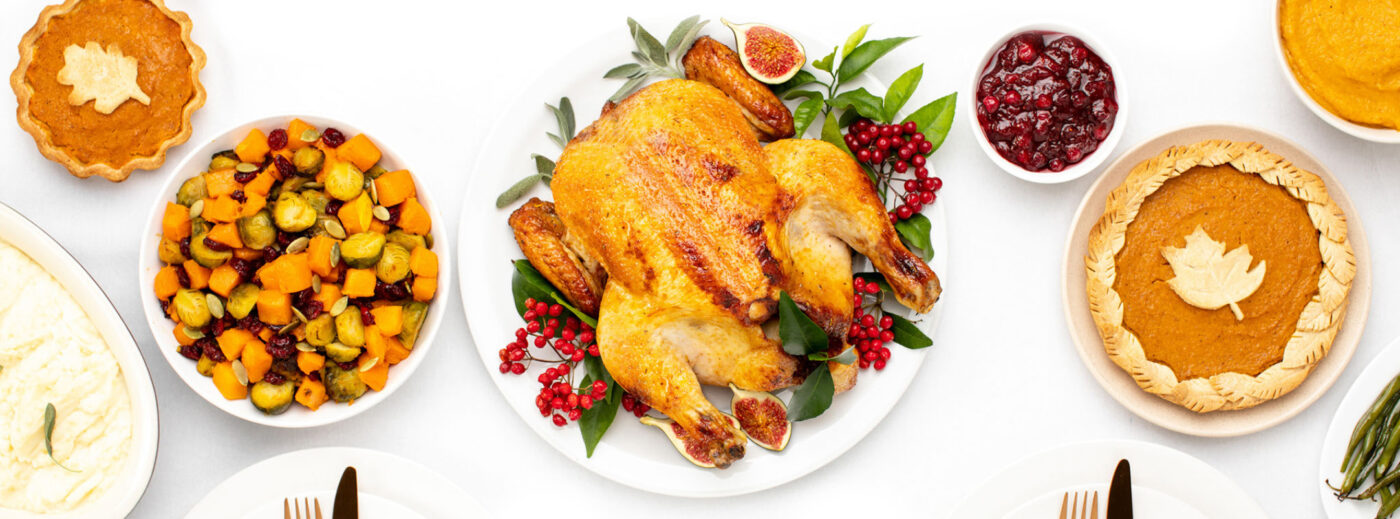
From Screen to Plate: How Media Manipulates Our Meal Choices
You know, it’s funny how our eating habits can sometimes play into stereotypes, especially when we’re on a date. A lot of women feel like if they eat too much, it’s not “ladylike”, while a lot of guys think that eating a ton makes them look tough or strong.
You ever notice how the food we crave can be influenced by a ton of different things? Like, your family traditions, the commercials we see, TV shows and movies, the books we read, our friends, even our culture. It’s like we’re constantly being nudged towards certain foods.
Think about the holiday season. You know how during Christmas, all those movies and shows start playing, where everyone’s sipping on hot cocoa by a fire, with marshmallows floating on top? It’s like every other scene is a family tucking into a roast turkey, mashed potatoes, and pumpkin pie.
I don’t know about you, but even if I just ate, watching those scenes makes me crave a big, festive meal. And it’s not just me. Ever noticed how the grocery stores stock up on turkeys, cranberry sauce, and all the holiday foods around that time? It’s because everyone’s influenced by what they’re seeing on TV and in movies.

From Food Fights to Emotional Bites: The Hidden Trauma in Our Eating Patterns
For some, growing up involved meal times that felt like navigating a war zone, not a dinner table. The tension was palpable, a ticking time bomb of sorts. Mistakes were highlighted, not dishes, and the main course was often a serving of harsh words. You’d think the instinct would be to flee, but doing so could escalate things. That’s a tough environment, right?
Now think about Pavlov’s dogs, who salivated at a bell because they associated it with food. In a similar vein, these tense meals might’ve made food synonymous with stress or fear. It’s a complex situation, given we’re much more complicated than dogs and our world isn’t a lab.
And here’s the kicker: even after growing up, leaving home, and finally getting to enjoy peaceful meals, certain triggers could bring back those stressful reactions. It’s surprising and hard how our past can echo into our present, isn’t it?
So, for some people, childhood meals felt like stepping into a minefield, and that is why they might see hunger as a warning sign in adulthood. To avoid these ‘danger’ signals, they could be constantly nibbling or drinking sodas. And it’s not always actual hunger – sometimes it’s stress disguised as hunger pangs.
With the dinner table being a source of stress growing up, it’s no surprise that there’s a subtle unease at mealtimes. So, they might opt to eat standing up, perhaps by the fridge or in the kitchen. Distractions like the TV or eating on the go might seem better. And eating out? It’s a safe haven since the family tensions were less likely to surface in public places.
So, consider a scenario where a family has their fair share of ups and downs. But, when Thanksgiving rolls around, it’s like hitting the pause button on all the squabbles. The whole family’s at Grandma’s, laughing, eating, and reminiscing about the good times.
Now, fast forward to adulthood. If there’s a family disagreement or if someone’s feeling self-critical, they might try to recreate that Thanksgiving feeling by overeating. It’s like they’re trying to drown out the negative voices in their head with food. This is something called “self-soothing.”
But, it’s like putting a band-aid on a wound that needs stitches. The quiet doesn’t last long. After the food-coma fades, the critical voices come back louder, and they’ve got more ammunition now.
You see, these coping mechanisms – eating quickly, constantly snacking to avoid feeling hungry, or eating to the point of being stuffed – might’ve helped as a kid in a tough situation. But as adults, it’s not the healthiest way to deal with things.

Chewing on the Complexities of Our Food Choices
So, as we’ve journeyed from Pavlov’s dogs to holiday meals and everything in between, it’s clear that our relationship with food isn’t as simple as just eating when we’re hungry. The way we eat, what we eat, and even how we feel about eating, are all shaped by a host of factors – from our early experiences and emotional connections to social conditioning and media influences.
What’s really cool is that by understanding these factors, we can start to make more sense of our own eating habits and preferences. Got a sweet tooth that won’t quit? Maybe it’s linked to those comfort foods you enjoyed as a baby. Finding yourself reaching for snacks when you’re stressed? It might be your way of trying to recreate the peace of a long-ago Thanksgiving meal.
And hey, the next time you find yourself judging someone else’s food choices or eating habits, remember: their plate tells a story too. It’s about more than just what’s for dinner—it’s about their past, their experiences, their culture, and so much more. So let’s embrace this newfound understanding and extend some empathy, shall we? We’re all just trying to navigate this complex, flavorful world of food, one bite at a time.

You know, a lot of the habits we pick up when we’re little – like needing a night light or refusing to eat broccoli – usually just fade out as we grow up. As we get older, we tend to adapt, and we can often spot these weird quirks we used to have and shake them off.
But, let’s be real, some habits stick around, hiding in the shadows, kind of like those embarrassing high school photos you thought were lost forever. These stubborn habits can hold us back without us even knowing it. So, how do you know when you’ve stumbled back into one of these old ways? There are a few telltale signs: maybe you’re suddenly eating in a really peculiar way, or you’re getting angry out of the blue, or you have this intense craving, or it’s like you’re zoning out completely.

From High Chair to Dining Chair: The Evolution of Our Food Quirks
We’ve all got our unique ways of dealing with food, right? And a lot of it comes down to stuff that happened when we were kids. It’s kind of like how you train a dog to sit with a treat – we humans get conditioned too. Take the way we eat our meals, for instance.
Ever met someone who always puts a little bit of everything on their plate? This might be a habit from childhood when they were taught to respect the hard work that went into preparing the food, so they made sure to try a bit of it all.
And then there are those who leave just a smidge of each dish on their plate. This might be a throwback from a time when they had parents who were super keen on making sure they provided enough food. So, leaving a little bit was their silent way of saying, “Yep, Mom, Dad, you did good. I’m full.”
Then there’s the ‘no-food-touching‘ crowd. You know, the ones who eat one thing at a time and can’t stand it when their peas mix with their mashed potatoes. This could be from a parent who served meals in those divided plates, or maybe they just didn’t like the flavors mingling when they were kids.
Oh, and let’s not forget about the “food architects.” These are the people who create little food sculptures or tell a story with their food. Maybe as a child, they had to make mealtime more fun or imaginative.
And lastly, we’ve got the “ritual eaters.” These people always eat their meals in a specific order. Like, breakfast has to be eaten before they do anything else, lunch at exactly 1 PM, and dinner not a minute past 7 PM. This could be a holdover from a strict meal schedule when they were growing up.
So yeah, when you start to pay attention, you’ll see we’ve all got our food quirks. Some might be a little more noticeable than others, but they’re there, shaping our relationship with food in all sorts of interesting ways.
You know, most of the time, we don’t even realize we’ve got these quirky food habits. They’re like a secret language our stomachs are speaking that we’re not even aware of! It’s like we’re on autopilot, just doing our thing without giving it a second thought. It’s not until a friend says, “Hey, did you know you always eat the red M&Ms last?” that we start to notice. So yeah, sometimes we need a bit of a nudge from others to realize just how unique our eating habits can be.

Eating Amnesia: Zoning Out with a Fork in Hand
We’ve all had those moments when we eat a little more than we should, right? Like during holidays or birthday parties. But for some people, this kind of overeating isn’t a once-in-a-while thing. It’s more like an out-of-control food marathon that happens every couple of days. They’re talking thousands of calories consumed in just an hour or two. It’s not about the food, really. It’s about trying to forget – even for a little while – feelings of fear, loneliness, or the sense that they’re just not cutting it. So yeah, sometimes we eat to zone out, and other times we zone out while we’re eating. Either way, it’s a sign that there are some deep-seated food habits at play.
But hey, the whole idea of mindful eating isn’t about making certain foods off-limits. It’s about being aware of how tempting it can be to use food as an escape. By paying attention to what we’re eating, we’re also paying attention to what’s going on in our heads and our hearts. And that gives us a bit of wiggle room, a chance to live our lives on our own terms. Every time we make a conscious choice – whether it’s a cake or a protein shake – we’re bringing a little more sanity into our lives.

Poking the Ego: Unearthing Deep-Seated Food Biases
So, how can we tackle these hidden food habits that are messing with us? The answer is – drumroll, please – awareness. That’s right, being awake to how our blind spots are causing us and others to suffer. But here’s the thing: this isn’t a ‘set it and forget it’ kind of deal. It’s something we’ve got to choose over and over again, every single day.
Now, you might think of anger as a bad thing, right? Something you need to get rid of ASAP. But believe it or not, anger can actually be a great teacher. Think of it as your personal alarm clock. It’s like a nudge from your subconscious saying, ‘Hey, you’ve got a hidden pattern at play here.’ It’s a sign that our ego’s invisible force field has been poked.
So, once we’ve had that ‘poke,’ what happens next? Suddenly, we can start to see these hidden patterns for what they really are, and we can start working on untangling them. Let’s say, for example,
you’re visiting a friend who’s an avid gardener, and they’re super excited to share their homegrown veggies with you. But here’s the catch: they’re absolutely wild about zucchinis, and you… well, you’ve never really been a fan.
So, when they proudly present you with a heaping plate of zucchini fritters, your first thought might be, “Oh boy, how am I going to get through this?”
If you’re aware of your own thoughts, you might notice that there’s a bit of ‘extra seasoning’ in your internal reaction. And then, your mind starts to weave a tale: “Oh yeah, they always go overboard with the zucchinis. Remember that time they made zucchini lasagna, zucchini bread, and zucchini soup all in one meal?” Suddenly, your mind’s taking a deep dive into every zucchini-filled memory it can find.
But here’s the cool part: if you can hit the pause button on that narrative and just focus on the here and now – the weight of the plate in your hand, the aroma of the freshly fried fritters, their golden-brown color, the crunch they make when you take a bite – then you can start to appreciate the love and effort your friend put into preparing this meal.
And just like that, you’re reminded that the real issue starts with you. “Hey, these are just zucchini fritters. They’re a gift. And all they’ve done is trigger my old ‘zucchini overload’ complex. I can see that well-worn mental trail, but I’m not going down it tonight. I’m going to stay in the moment and appreciate this meal, right here, right now.
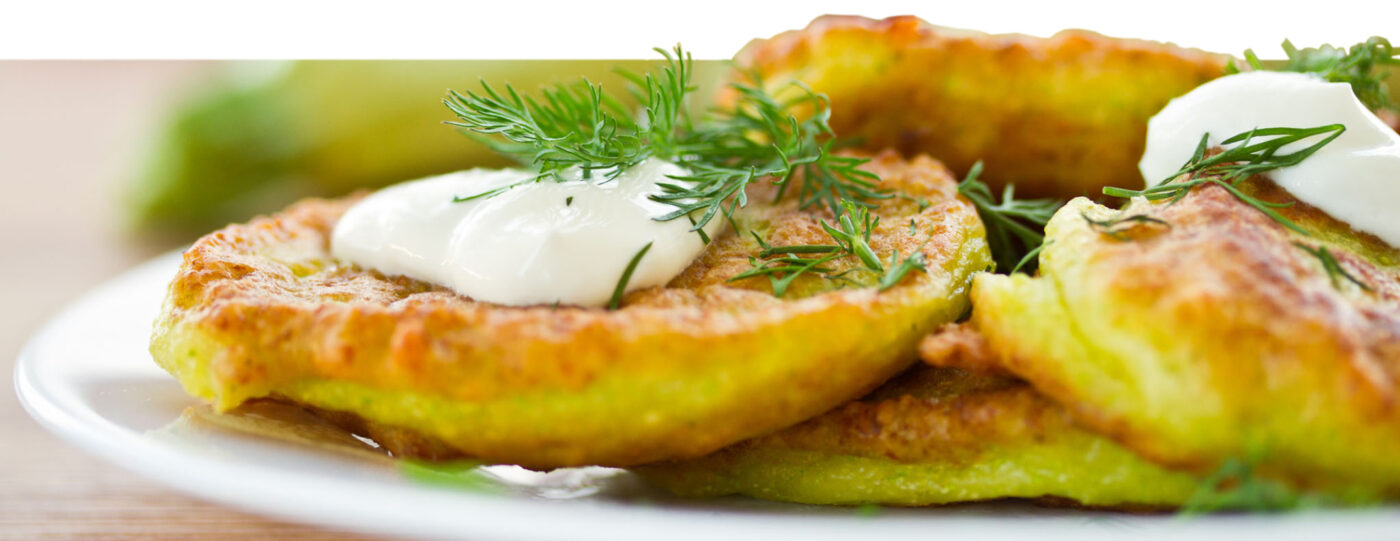
PRACTICES

✦ Digesting the Past: Foodprint Analysis
Understanding how your past experiences have shaped your current eating habits.
By going through this exercise, you can gain valuable insights into your conditioning around eating and how it has shaped your relationship with food.
Childhood Meal Recall
Start by finding a quiet place where you can sit and reflect. Think back to a typical meal when you were five to ten years old. You could jot this down in a journal or just mull it over in your mind. Ask yourself these questions:
- Where did you usually have your meals? Was it at the dining table, in the kitchen, or somewhere else?
- Who was usually present during mealtime? Family members, friends, or just yourself?
- What was the noise and activity level like? Was it quiet and calm, or lively and bustling?
- Do you remember who made the food? Was it a parent, grandparent, or someone else?
- How did you feel about the food that was served? Did you generally enjoy it or have any preferences?
- How was the food served to you? Were you given specific portions, or did you serve yourself?
- What was the overall mood during meals? Happy, serious, or something else?
- Do you recall any particular topics that were talked about during mealtimes?
- Who was usually the one doing most of the talking?
- How long did the meals typically last? Were they quick or leisurely affairs?
- How did people usually finish the meal and leave the table?
Food Rules Recall
Next, list out as many food and table manner rules as you can remember from your childhood. You can write these down or just think about them. These could be things like:
- “No elbows on the table.”
- “No talking with your mouth full.”
- “No seconds until everyone has had a first helping.”
- “You have to at least try everything on your plate.”
- “No dessert unless you…”
- “Don’t chew with your mouth open.”
- “Children are to be seen, not heard.”
- “No snacks before dinner or you’ll ruin your appetite.”
- “Don’t make faces or negative comments about the food.”
- “Wait for everyone to start eating before you begin.”
- “You have to finish everything on your plate.”
- “No reading or watching TV at the dinner table.”
- “Always say ‘please’ and ‘thank you’ when asking for or receiving food.”
- “No playing with your food.” etc.
Current Reactions to Past Rules
Reflect on how these rules have influenced your eating habits and attitudes towards food and how you’ve reacted to them as an adult.
- Do you still honor them, or have you modified or rebelled against them?
- What happens if you break the rules or refuse to eat a certain food now? How do you or others react? Does it create any tension or conflict?
This exercise sheds light on how your past might still be shaping your eating habits today. So be honest with yourself, and remember there are no right or wrong answers here.
✦ Feeding Your Self-Awareness: Understanding Your Food History for a Healthier Present
The point of this exercise is to gain a deeper understanding of your personal eating history and how it has shaped your current eating habits and attitudes toward food. By diving into your past and exploring your early experiences with food, you can start to identify patterns and habits that might be influencing your present relationship with food. This self-awareness can then empower you to make conscious, intentional changes to your eating habits if desired.
Collecting Childhood Food Memories
Begin by sitting down in a quiet place with a pen and paper or at your computer. Close your eyes and try to remember your eating habits from when you were five to ten years old.
- Could you describe your eating habits in one word? One sentence?
- Did you face any physical difficulties around eating, like colic, gastroesophageal reflux, stomachaches, diarrhea, or constipation?
- Were there any foods that you absolutely loved or hated? How do you know this? Did you have any strong reactions or memorable experiences associated with certain foods?
Write down anything and everything that comes to mind. It’s okay if your memories are a bit fuzzy – just note down what you can recall.
Finding Patterns in Old Photos or Home Videos
If you have access to any old photographs or home videos that feature meals or food, spend some time going through them. Look for clues about your childhood eating habits.
- Are you often pictured with a certain food?
- Can you see any behaviors or reactions to food that are consistent across different photos or videos?
- What are your expressions like in these photos or videos? Do you seem excited, indifferent, or unhappy with the food?
Cross-referencing with Family Tales and Anecdotes
Now, try to recall any stories or anecdotes your family members have shared about your eating habits when you were younger. This can be tricky because memories can be influenced by the teller’s perspective, but it’s still a valuable resource for understanding your childhood relationship with food.
- What kind of eater did your family describe you as? Picky? Voracious? Adventurous?
- Are there any memorable incidents related to food that have become family legends?
Through this exercise, remember you are not seeking judgment but understanding. Treat the ‘you’ from the past with kindness and curiosity, just as a scientist would treat a fascinating study. This journey into your food history is all about gaining a better understanding of your current habits and maybe even finding the key to free yourself from the ones that no longer serve you.
Be Alive 🌱
Love ❤️, Julia
Mindful Eating 🥢
Mindful Eating Meditation
GUIDED MEDITATIONS 💗
DISCLAIMER: The materials and the information contained on the Positive Pranic website are provided for general and educational purposes only and do not constitute any legal, medical, or other professional advice on any subject matter. None of the information on our videos is a substitute for a diagnosis and treatment by your health professional. Always seek the advice of your physician or other qualified health providers prior to starting any new diet or treatment and with any questions you may have regarding a medical condition. If you have or suspect that you have a medical problem, promptly contact your health care provider.



